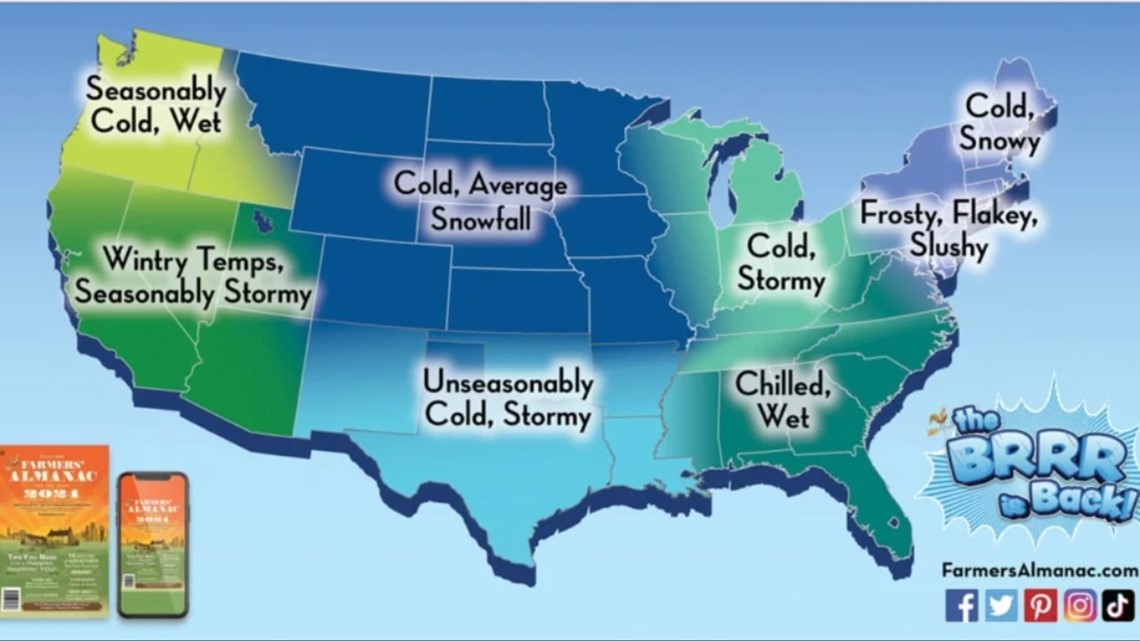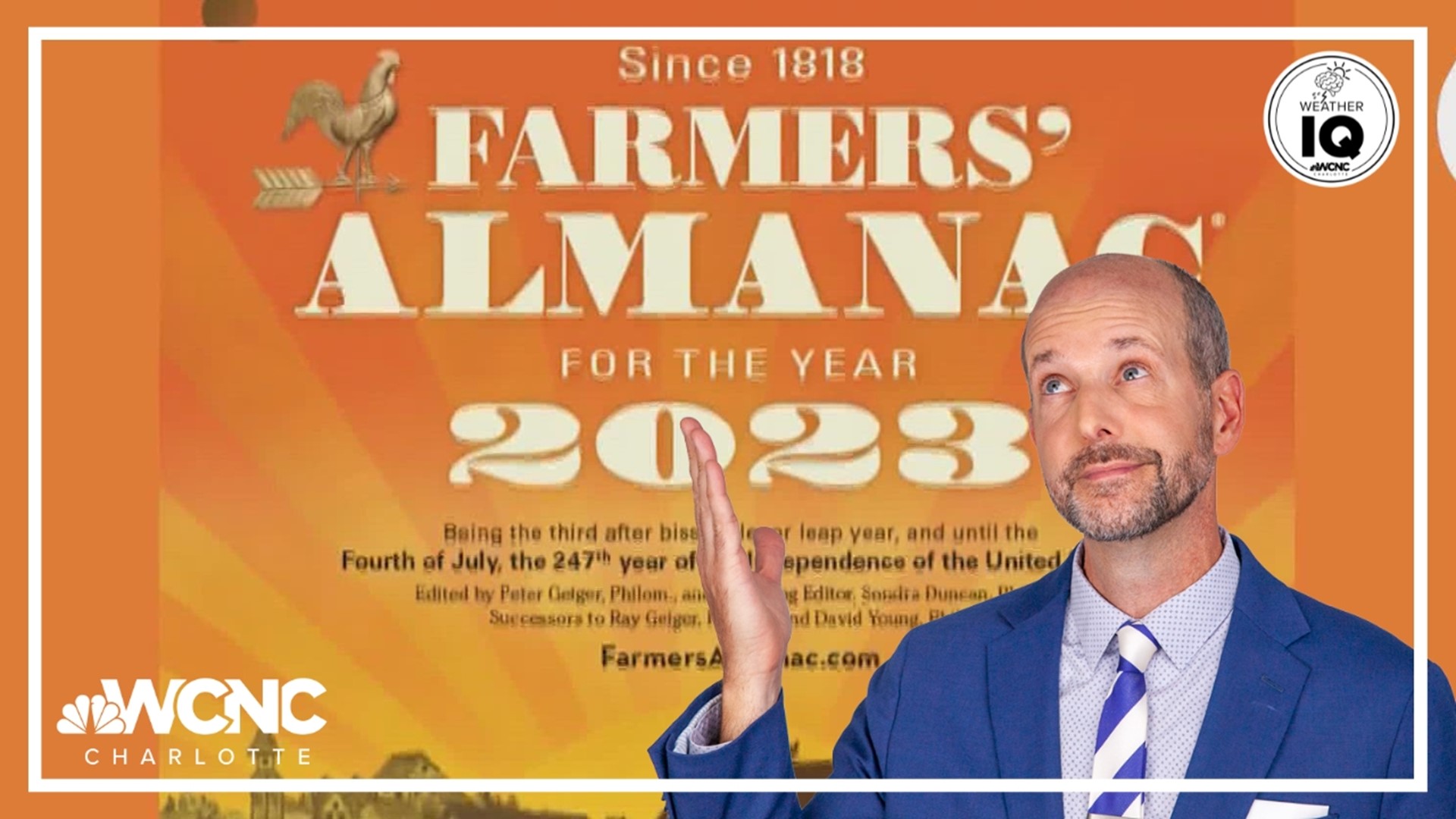CHARLOTTE, N.C. — The Farmers' Almanac has published its annual winter weather forecast outlook, which raises the reoccurring question: Is the Farmers' Almanac accurate?
What is the Farmers' Almanac
The tradition of the Farmers' Almanac traces back to 1818 and is not to be confused with the Old Farmer's Almanac, which dates back to 1792. Both publications have similar names and provide weather predictions months in advance.
Traditional weather forecasters, like the ones at WCNC Charlotte or the ones provided by the National Weather Service, forecast the weather up to 10 days in advance. These comparatively shorter-term forecasts provide weather forecasts with specific temperatures and precipitation chances by day -- and in some cases, by the hour.
On the other hand, outlooks, like the ones published by the Farmers' Almanac, are generalized weather predictions that encompass large geographic areas over a larger period of time. Those areas could be as large as multiple U.S. states and cover upwards of three months.


While meteorologists, including WCNC Charlotte's Brad Panovich, National Weather Service, and the National Hurricane Center also issue their own seasonal outlooks, there's a difference between those and that of the Farmers' Almanac.
How the Farmers' Almanac works
Like Coca-Cola, the Farmers' Almanac says they use a closely guarded, secret formula to predict the weather.
"The formula takes into consideration things like sunspot activity, tidal action of the Moon, the position of the planets, and a variety of other factors," the publication explains on its website. "The only person who knows the exact formula is the Farmers’ Almanac weather prognosticator who goes by the pseudonym of Caleb Weatherbee. To protect this proprietary formula, the editors of the Farmers’ Almanac prefer to keep both Caleb’s true identity and the formula a closely guarded brand secret."
Transparency is lacking when it comes to who is making the Farmers' Almanac prediction and what data they're emphasizing.
Is the Farmers' Almanac accurate?
The Farmers' Almanac says that many of their readers believe them to be between 80% and 85% accurate. Similar numbers are widely repeated across the internet and in other articles. Some articles though reference a University of Illinois study, which was first published in a 1981 edition of the Weatherwise magazine, that the accuracy rate could be as low as 52% of the time.
How meteorologists feel about the Farmers' Almanac
Meteorologists can be skeptical of the Farmers' Almanac. WCNC Charlotte Chief Meteorologist Brad Panovich produces his own tongue-in-cheek outlook each fall that is full of satirical weather references.
"I love posting this one for fun," Panovich wrote. "For those that don't know this is my satire forecast that makes fun of the Farmers Almanac. I do enjoy watching people argue about a joke forecast though."
Panovich does issue his official winter weather forecast each year in early November. And while his batting average isn't perfect either (he notably called for snow in 2023 and the season became one of the first to see no measurable snowfall in Charlotte). Despite any imperfections, Panovich is also transparent about his data and answers viewers' questions about how its made.
WCNC Charlotte’s Weather IQ YouTube channel gives detailed explainers from the WCNC Charlotte meteorologists to help you learn and understand weather, climate and science. Watch previous stories where you can raise your Weather IQ in the YouTube playlist below and subscribe to get updated when new videos are uploaded.

